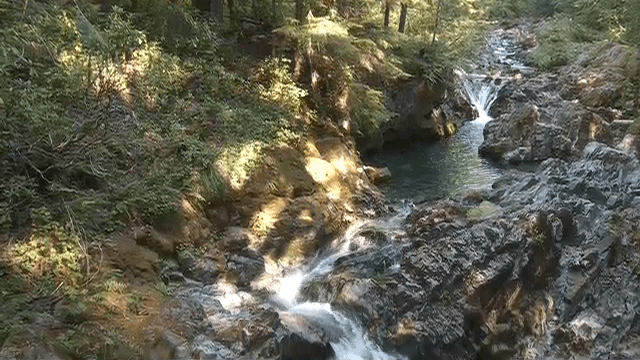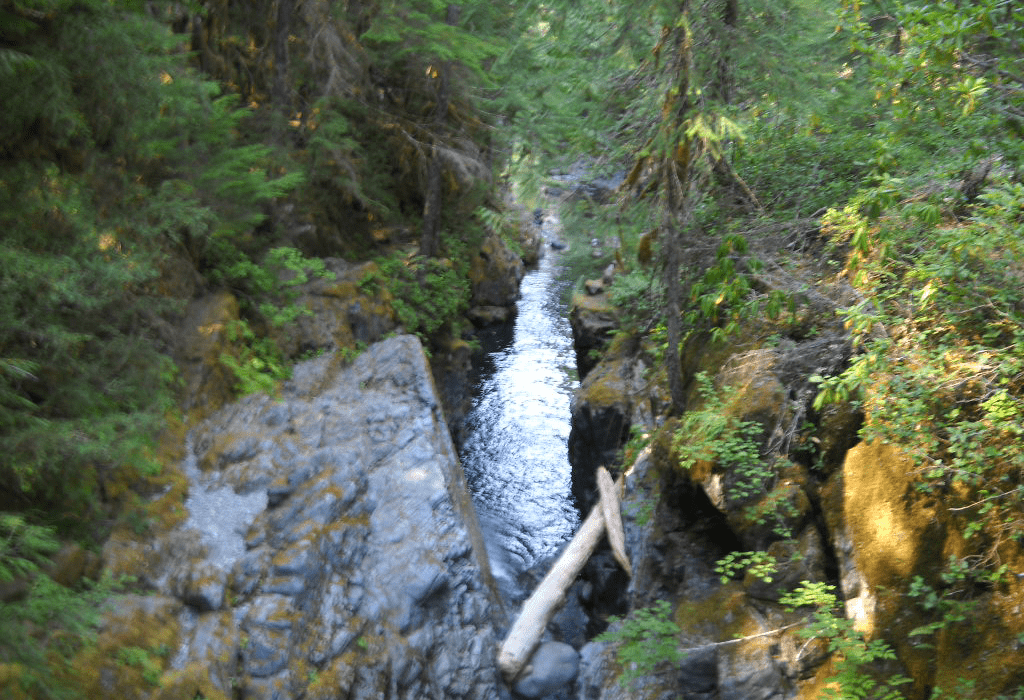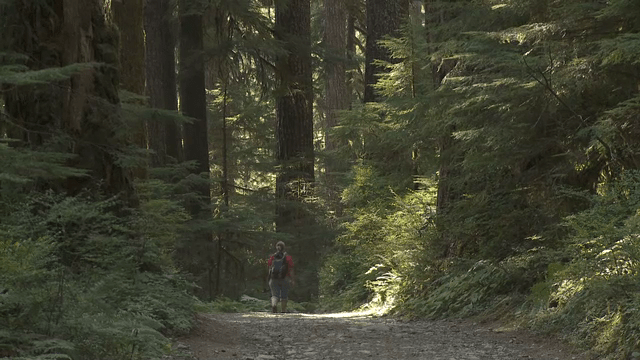If you wish to beat the heat during a late summer hot spell, consider an easy-to-reach getaway that offers an escape into the cool Cascade Mountain wilderness. All it takes is a simple leap of faith to find a moment in the gorgeous and refreshing pools of Opal Creek.
The 30-foot drop from the high, rocky bluff into the cold Opal Creek pool below is a draw for thrill seekers, but it’s also place shrouded and shaded by towering, ancient Douglas fir trees. When you walk among the giant trees, it feels as if someone left a freezer door open – it’s that cool – for the visitors who journey the less traveled trails into Oregon’s Opal Creek Wilderness.
Refreshing at a reliable 42 degrees, the creek is one of many small treasures you’ll discover across the huge 35,000-acre Opal Creek Wilderness and National Scenic Recreation Area. Opal Creek, in the Willamette National Forest, is more than 100 miles from Portland. It’s a watershed that was once center stage for one of our country’s most publicized old growth timber battles of the past century.
Oregon Senator Mark Hatfield capped his career by convincing Congress to protect Opal Creek as a scenic recreation area and wilderness in 1996. That action ended the debate over the watershed’s ancient trees that date to the middle ages.
“Everywhere you look, you have 450-year-old trees, but many are a thousand years old, plus the many pristine streams,” says George Atiyeh, a longtime forest activist. He grew up near Opal Creek, so the watershed became his backyard and he grew to love and admire the place. Atiyeh became a supporter and central figure in promoting and publicizing the features and benefits of protecting and preserving Oregon’s fast-disappearing ancient trees. So it’s no surprise that today he works with the Opal Creek Ancient Forest Center at a small wooden village called “Jawbone Flats” in the Opal Creek Scenic Recreation Area.
The collection of cabins and classrooms is where education and tourism collaborate in a unique partnership that draw the curious and the dedicated alike who wish to learn more about the values of an ancient forest setting. “This forest was what the whole west side of Oregon looked like all the way down to California,” says Katie Ryan, the Center’s Executive Director. “There’s very little of it left but here you get a chance to immerse yourself in it.”
Oh – and in case you’re wondering – Atiyeh added, the name “Opal” was not out of special recognition for the creek’s color, but rather a woman’s beauty: “An early US Forest Service Ranger (Elliot) saw Opal Creek and said it was almost as beautiful as his wife. So, he named it Opal Creek (it had been called “Boulder Creek”) for his wife.”
Today, the popular trail requires a three-mile hike to reach Jawbone Flats. You may also choose to link with many other trails that reach across Opal Creek Wilderness or the adjoining Bull of the Woods Wilderness. When you arrive, you will discover rustic rental cabins that are available for an overnight stay (by reservation only), an education center, a general store and even a restaurant.
“It’s a great place for families to bring little kids because we have all the amenities of home but you feel you’re in wilderness,” says Ryan. “Many people stay here for a night, go out on a backpacking trip and come back and stay for another night.”
The Opal Creek Ancient Forest Education Center offers a varied curriculum suitable for adults and children about the values and the science of the land and water found in an old growth forest. Visitor Zoe Edelen Hare has returned each summer ever since she was a college student in the early ’90s. She said the hands-on learning experiences bring the kid out in everyone: “It’s serene and quiet, and completely off the grid, so no one is looking at their cell phones, looking for text messages. It’s nice to slow down, plus our children know that we’re focused with them and not trying to do our own work. There’s something about this place – it’s magical and we like to come back here.”
Katie Ryan agreed about the magic of the moments at Opal Creek. While it may take a bit more effort to reach, it is worth each step of the journey. “The reason our water is so clear is because the trees are still on the banks holding the landscape in place, and all of this functions the way a forest is supposed to; it’s not managed and that’s becoming harder and harder to find.”



